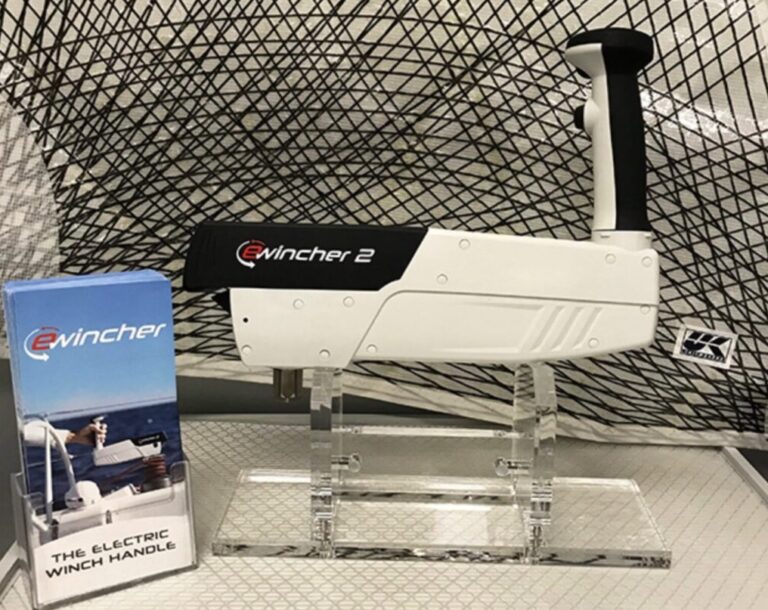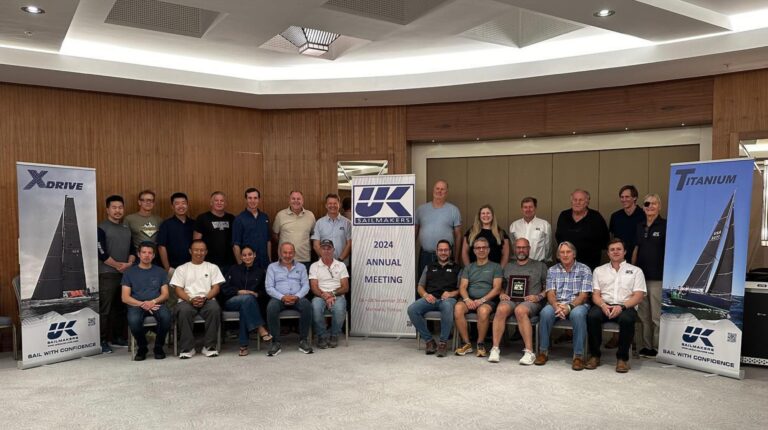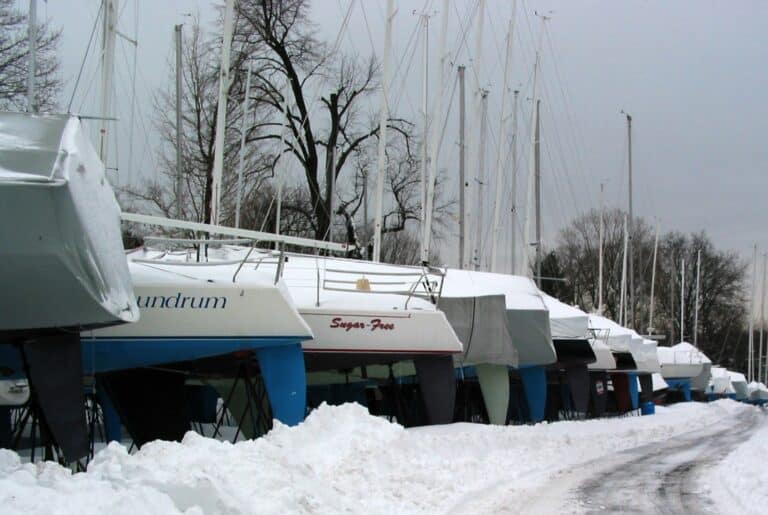Many times in your racing career, you will find that the race committee has favored the port end of the line. The more the line is skewed, the more of a lead the boat at the pin will have once the starting gun goes off. This video shows three examples of boats winning the pin.
Some key tactics approaching the pin on starboard:
- Have a good pin-end line sight if possible.
- Avoid getting overlapped to leeward.
- Work to establish a gap in the fleet to your lee side so you can foot off to build speed just before the start.
- Don’t be afraid to point head-to-wind (but no further) to defend against a boat approaching to windward.
- Make sure you are up to full speed before the gun.
The first two-minute opening sequence of this video is a beautiful example of Bill Henson’s JPK 45 SIRENE winning the favored pin-end start of the 2023 Cape Naturaliste Race. At 100 seconds before the start, SIRENE passes behind the committee boat on starboard. During the next 20 seconds, the green boat bears off to jibe around. Notice that SIRENE bears off at the same time, but while keeping on starboard to push the green boat away from the line to carve a bigger hole. At 75 seconds, SIRENE tightens up and luffs down the line making sure she only has the minimal speed needed to keep all the other boats from getting a leeward overlap. As long as she keeps clear ahead, no other boat can luff her over the line. At 30 seconds, she lets a boat get overlapped on her windward quarter. This is no problem; notice how fast that boat falls behind once SIRENE tightens up and puts that boat in her bad air. Just after the stat SIRENE has a huge lead.Thank you to Lindsay Preece for this video showing the IRC start of the 2023 200-mile Cape Naturaliste and Return race that started and finished off Fremantle, Western Australia.

The second situation comes from the start of the 2010 630-mile Newport to Bermuda Race. The pin was favored enough that boats on starboard tack on the line were sailing close hauled. I called the pin-winning start on the J/109 APSARA. The tricks to winning the pin in that start was first to time how long it took to sail from one side of the line to the other. Then for our final approach, we started out to windward of the committee boat so that we could reach down the line with speed. All the boats that started below the line had to pinch and go slow to get up to the line. Down toward the port end, we converged with the other boats, but APSARA had speed to sail across their bows. Once we were across the last boat, we dove down to keep from getting hooked by the dark blue Swan 44 TRIPLE LINDY. As the photo shows, we timed it perfectly without a second to spare. As a result, we started off the 630-mile race first in class, which was a high note for our team.
The Port Tack start is another way to win the pin. It works when the starting line is skewed more than five degrees and the bulk of the fleet doesn’t realize it. The third clip shows of the Platu 25 crossing her fleet by three or four boatlengths in a Thursday evening race two years ago. In most club racing fleets, starting on starboard is too ingrained in most racers. If I realize the pin is that favored, I don’t do any practice runs of my port approach to keep from tipping off the fleet. Pulling off a port start is gets your heart PUMPING!

If you can’t cross the fleet on port, you can still do a port approach start to win the pin, but the method has plenty of risk. You have to approach the line on port and tack in front of the first starboard tacker coming down the line.
If you mis-time your tack, you can get protested for tacking too close (not keeping clear of a right of way boat. Remember once you start tacking you have to keep clear of all boats already on a tack and you have not completed your tack until you have passed through the eye of the wind and then fallen off onto a closehauled course. If you plan to tack below a boat and luff, you cannot luff until you have first fallen off onto the new starboard head-to-wind heading.) The second issue you might get into when doing a “Port Approach” to win the pin is that you can tack too soon and end up being early.
In a big fleet on a line that is not skewed, the port approach is a good move allows you pick any hole in the line to tack into. As long as you have space to leeward to keep from getting bad air, you have picked a good place to start if the line is square. Approaching the line on port allows you to keep clear air and flexibility until you are ready to commit to a hole.






